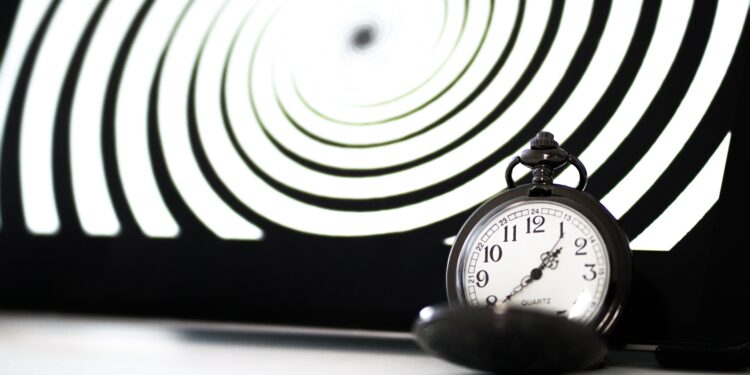HOW DOES HYPNOSIS WORK?

Hypnosis, similar to astrology, has aroused so much controversy. The term hypnosis is derived from “hypnos”, meaning “sleep” in ancient Greek. It is a state of deep sleep or trance that enhances a person’s capacity to respond to suggestions by another, being unaware of his/her immediate surroundings. Doctors have performed operations without putting hypnotised patients under anaesthesia while it has helped police to track down criminals. As researchers are at loggerheads with each other as to how it works, an air of mystery surrounds the whole phenomenon.
Arthur Robert Ashe Jr. (1943-1993), a black American professional tennis star, was ranked as world No. 1 by tennis magazines in 1975. Unfortunately, at the age of 49, he died of pneumonia, related to HIV from a blood transfusion he received for his heart bypass surgery. Before his death, Ashe founded the Arthur Ashe Foundation to combat AIDS.
Robert George Willis (1949-2019), an English cricketer, is regarded by many as one of the best fast bowlers of all time. He was England’s fourth highest wicket-taker as of 2019.
British athlete Rosaline Few (born in 1955) excelled in the women’s high jump at the 1972 summer Olympics in Munich (then West Germany), which, however, was marred by the massacre of 11 Israeli athletes by Palestinian Black September members.
What is so significant about these three players is that all of them depended on post-hypnotic treatment or suggestions to display their best in their respective games.
Nonetheless, many researchers and scholars reject the concept of hypnosis altogether, arguing that it may be something connected to a type of hysteria: disturbance of the nervous system with uncontrollable outburst of emotion. Even the proponents of the concept themselves are unaware as to how the mechanism that casts hypnotic spells works.
Yet, operations have been performed under hypnosis without resorting to anaesthesia and the patients have not felt any pain or agony.
It is equally true that hypnotism began to be used in the police department. An Israeli girl who was brutally raped, but had no recollection of the attacker, was put under hypnosis and she gave a vivid description of the culprit, which helped police locate and punish the rapist. Due to hypnosis, many patients have been cured of their untold traumas, suffering and pangs of depression.
In 1976 some people in France, complaining of insomnia, visited Jacquy Nuguet, a hypnotherapist who put all under ‘mass sleep’ and they slept continuously for 10 days and got up only for a short while to attend to their daily needs and to take some orange juice. Nuguet did a miracle under medical supervision, as all the patients were cured of insomnia, baffling the physicians.
History of hypnosis
People have been entering into hypnotic trances throughout the ages. The earliest record of a description of a hypnotic state can be found in the writings of Ibn Sina (980-1037 A. D.) or Avicenna as he was known in the West. He was a Persian polymath in the Golden Age of Islam from the 8th to 14th centuries. In many cultures and religions hypnosis was considered a form of meditation. Abbé Faria (1756-1819), a Luso-Goan Catholic monk in Portuguese India, was one of the pioneers of the scientific study of hypnotism. Unlike Franz Mesmer (1734-1815), the famous German physician who popularised modern hypnosis, earning him the name of the father of modern hypnotism, Faria claimed that it worked purely by the power of suggestion.
Ambroise-Auguste Liébeault (1823-1904), a French physician, is regarded as the father of modern hypnotherapy. He tried hypnotic treatment on his patients, which yielded positive results. Consequently, such treatment was inducted into the routine of his hospital.
The popularity of hypnotism reached its zenith in the second half of the 20th century. It became a subject of serious studies and many books were written and TV programmes were conducted. More Lives Than One by BBC producer Jeffrey Iverson and Encounters With The Past by Peter Moss were two groundbreaking publications on the subject.
Does hypnotism prove previous lives or is it merely autosuggestion?
The best known experiment in this regard was conducted by the 19th century British hypnotherapist Arnall Bloxham. He regressed Cardiff housewife Jane Evans who became a 12th century Jevess Rebecca. Under hypnosis she narrated her life in detail, giving an accurate description of the church crypt and the Jewish massacre. Bloxham assembled data on some 400 cases of claimed reincarnation. However, critics assert that the research has indicated that hypnotism may aid the formation of false memories and it does not help people recall events more accurately.
Autosuggestion is a psychological technique developed by the French psychologist and pharmacist Émile Coué (1857-1926) at the beginning of the 20th century. It is a form of self-induced suggestion in which individuals guide their own thoughts, feelings or behaviour. This technique is often used in self-hypnosis or auto-hypnosis which is said to be used to quit smoking and for weight loss.
Hypnotism on animals
The classic example of hypnotism is that of a chicken whose beak was forced down to a line drawn by a chalk. The hypnotised chicken was under the impression that it could not move away from the line.
Benefits of hypnotism
Hypnosis-based therapies for the management of irritable bowel syndrome and menopause are supported by evidence. It may be used as well to treat depression, anxiety, eating and sleeping disorders, compulsive gambling, phobias and post-traumatic stress.
In conclusion, it can be said that the indisputable fact is that there is a state of mind which can be induced by many techniques during which some individuals seem to enjoy remarkable faculties and capabilities. Some subjects also become highly suggestible, dropping the defences put up normally by them. ***






